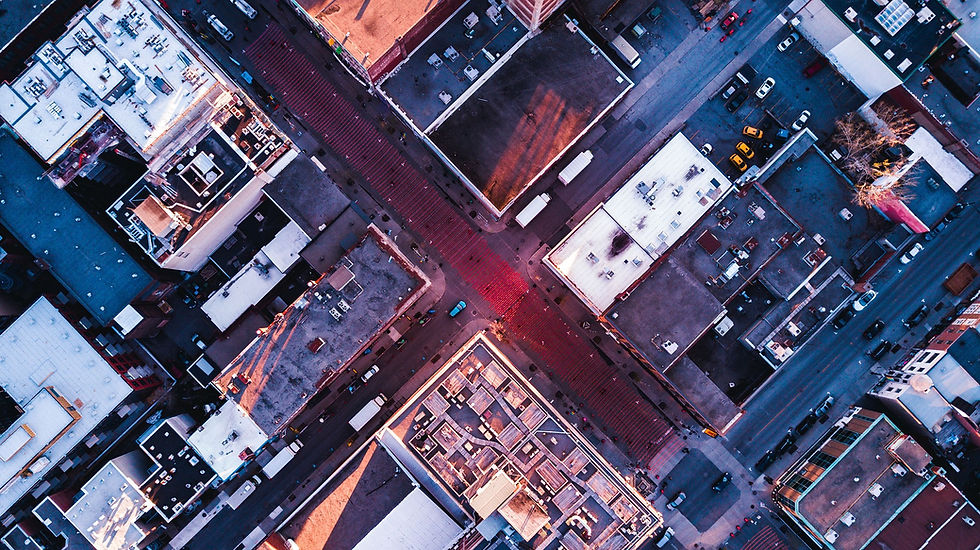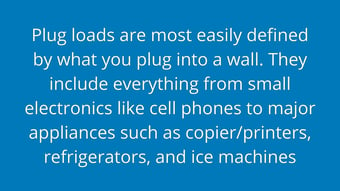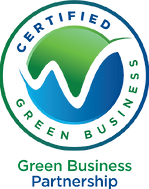- Oct 6, 2020
- 13 min read
What you Need to Know About Complying with NYC's Local Law 97 (Part 2)

Many solutions to LL97 compliance can be tackled with the tools you already have
New York City climate laws are among nation-leading policies and worth getting to know for anyone interested in the building sector or climate action solutions. City Council has been busy at work creating legislative drivers to reduce emissions from the building sector, which account for roughly ¾ of the City’s greenhouse emissions. Many building owners have a good understanding of what is required of them and are now figuring out how to go about it.
In this blog, I’ll outline some strategies for approaching this complex problem. This is the second part of a two-part blog. For the first, which provides more background and context on NYC climate laws, visit the first post.
Come up with a plan to meet the LL97 targets in 2024 & 2030:
Most of the solutions to meet all targets fall into one of two categories:
1) Reduce Energy Consumption and 2) Use Clean Energy.
Reduce consumption – employ energy efficiency measures
 Energy efficiency measures can be applied to any of the following end
Energy efficiency measures can be applied to any of the following end
uses of energy:
-
Lighting: Switching lighting to LEDs plus controls is the biggest no-brainer, low hanging fruit, in my opinion. That measure can reduce your lighting electricity load by up to 70%. While LEDs have been known for being more expensive, prices have dropped, and their slightly higher upfront costs are more than outweighed by the significantly reduced operating cost. Upfront costs still an issue? Lighting as a service makes this more accessible than ever.
-
Plug loads: In NYC buildings, which are less HVAC driven due to higher floor area ratios than in less dense areas, electricity used for plug loads may be more than you think.
-
 Space heating: Can you reduce the amount of heat you need by implementing HVAC controls, sealing the building envelope, or relaxing set points? Can you change your source of heating to be less carbon-intensive? Heat pumps, especially when paired with geothermal systems, are the gold standard when it comes to clean heat.
Space heating: Can you reduce the amount of heat you need by implementing HVAC controls, sealing the building envelope, or relaxing set points? Can you change your source of heating to be less carbon-intensive? Heat pumps, especially when paired with geothermal systems, are the gold standard when it comes to clean heat. -
Space cooling: While cooling isn’t as energy-intensive as heating, there may be ways to make it more efficient by following the same methods as for heating.
Use clean energy – install renewable energy technologies
There are two main renewable energy technologies most applicable to the New York City building stock:
-
Solar: While on-site solar may be challenging for some NYC buildings, it can be appropriate for many and is in fact an option for a recent mandate. It is always a good idea to at least evaluate your roof for solar.
-
Geothermal: Geothermal is the cleanest method for heating and cooling and is growing in popularity within the United States. New technologies are emerging that make a geothermal retrofit for existing buildings more attainable. With virtually zero emissions and significantly lower energy and operational costs, geothermal systems installed in New York will be a game-changer when it comes to meeting LL97 limits.
The above-paired strategy of efficiency + renewables should be explored first. Beyond that, alternative compliance measures exist, such as purchasing RECs (Renewable Energy Certificates) generated within NYC, purchasing offsets, or trading allowances on the to-be-determined carbon market for the City. However, there are more unknowns around each of these options and they should be used only after doing everything feasible to make your building perform more cleanly.
Unfortunately or fortunately (depending on how you look at it), COVID 19 is not disrupting the timeline or requirements of LL97 from a policy perspective. Now is still the time to start planning.
-
Tackle the low hanging fruit: energy efficiency measures that are relatively low in cost or have a short payback period (examples: swap out all non-LED light bulbs for their more efficient counterpart, implement plug load controls, etc.)
-
Start planning for larger capital upgrades in the next few years. Deeper energy cuts will be necessary to reach the 2030 limits, which, are on average almost 60% more stringent than the 2024 limits depending on the building type.
-
Take stock of the age of your equipment. If heating or cooling equipment is close to the end of its useful life, think about your plan to replace it. Highly efficient options such as geothermal may not actually be much more expensive than an in-kind replacement, especially when the current strong incentives are factored in.
-
Review the content above and contact a professional to start improving your building. Brightcore is here for that step.
New York City’s Local Law 97 and other groundbreaking climate laws are a result of officials getting specific about requirements so that carbon goals set for decades in the future can be met. Even if your building isn’t located in the Big Apple, New York City climate laws are important to watch because other jurisdictions are developing similar regulations not to mention, the decarbonization approach behind LL97 creates better-performing buildings.
Eileen Quigley is Director, Client Sustainability at Brightcore. She contributes to our sustainability blog, where we share insights on clean energy solutions for your business or institution, whether you have a fully formed corporate social responsibility plan or you are just starting to consider a renewable energy or energy efficiency strategy. Follow Eileen (@EcoQuig) and Brightcore (@BCEnergy) on Twitter.


-3.png)


